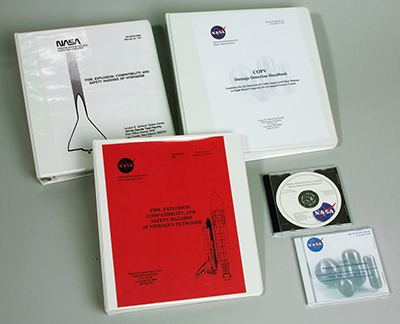Spreading the Word on Safety
Originating Technology/ NASA Contribution
Beginning with the Apollo Program in the early 1960s, the NASA White Sands Test Facility (WSTF) has supported every U.S. human exploration space flight program to date. Located in Las Cruces, New Mexico, WSTF is part of Johnson Space Center. The facility’s primary mission is to provide the expertise and infrastructure to test and evaluate spacecraft materials, components, and rocket propulsion systems to enable the safe human exploration and utilization of space.
WSTF stores, tests, and disposes of Space Shuttle and International Space Station propellants. Since aerospace fluids can have harmful reactions with the construction materials of the systems containing them, a major component of WSTF’s work is the study of propellants and hazardous materials. WSTF has a wide variety of resources to draw upon in assessing the fire, explosion, compatibility, and safety hazards of these fluids, which include hydrogen, oxygen, hydrazine fuels, and nitrogen tetroxide. In addition to developing new test methods, WSTF has created technical manuals and training courses for the safe use of aerospace fluids.
Partnership
As part of NASA’s goal to transfer technology to industry and the commercial sector, WSTF partners with standards organizations such as the American Society for Testing and Materials (ASTM) and the American Institute of Aeronautics and Astronautics to document results in technical papers and safety manuals, develop and deliver safety courses, and perform hazards/failure analyses. Through these partnerships, private industry can purchase the safety manuals and training courses.
Product Outcome
One of the main WSTF courses that ASTM markets is “Fire Hazards in Oxygen Systems,” which is intended for anyone who operates, maintains, or manufactures any type of oxygen system. The course benefits engineers, scientists, technicians, and others who are involved in the production or use of liquid or gaseous oxygen by teaching them to identify and evaluate hazards in oxygen systems. Other topics in the course include oxygen compatibility, appropriate material selections, and good practices for oxygen systems operations and maintenance.
The oxygen safety courses developed by WSTF served as models for the creation of other courses, such as a hydrogen safety course that is marketed through Wendell Hull & Associates, Inc., also of Las Cruces. This course offers valuable information as WSTF continues to work with the private sector to develop safety measures for the hydrogen industry.
WSTF’s technical manuals have become industry standards, and the training courses are taught worldwide. While WSTF’s courses and manuals benefit the development of technologies in the aerospace community, they also apply to other fields that use aerospace fluids. For example, the hydrogen manual and course can be applied to the development of fuel cells and hydrogen-powered vehicles. The oxygen training material benefits advances in medicine, gas production, chemical processing, andhealth care.

NASA safety manuals and training courses are available for purchase through several standards organizations.













